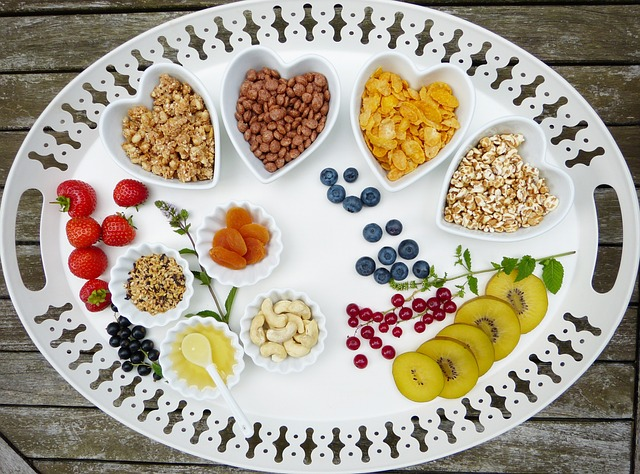Sports Nutrition
Sports Nutrition: Are You Eating Enough to Meet the Energy Demands of Your Sport?
Most athletes want to perform well in their sport. Whether they are actively competing or training for their enjoyment and health, athletes are driven to optimize performance.
This drive and motivation however can lead to intentional or unintentional low energy availability. Endurance sports, such as distance runners and aesthetic sports, especially those with frequent weigh-ins with an emphasis on losing weight are two common areas where an athlete’s risk for low energy availability is high. Although, all athletes are at risk for low energy availability, especially those with disordered eating habits.
Nailing one’s sports nutrition is a key consideration in order to both optimize and improve performance, prevent negative health outcomes and stay healthy. Working with a sports nutritionist to ensure you are eating a balanced diet to maintain adequate energy levels is essential for an athlete to consider.

Energy Availability
Energy Availability is expressed as Energy Intake (kcals) – Exercise Energy Expenditure (kcals) over Fat-Free Mass (KG) per day. Essentially, energy availability is the amount of energy left that is available for the body to use for physiological functions AFTER accounting for the energy used during exercise. Energy comes from the macronutrients in our diet. Carbohydrates, fats and protein all provide energy for the body. Whereas micronutrients, do not provide energy, but rather optimize physiological processes and affect the way our body metabolizes the macronutrients. Therefore, micronutrients are still an important part of sports nutrition. In order to boost athletic performance, sports nutrition should be a main consideration to prevent relative energy deficiency in sports.
Low Energy Availability
Low energy availability is when energy intake is not high enough to meet the energy demands expended in exercise, leaving the body with inadequate energy to support physiological functions to maintain optimal health and athletic performance. LEA can be a consequence of poor eating habits, disordered eating, and/or a decrease in food consumption, all leading to low energy stores. On the other hand, LEA can be a result of intense exercise and a very active body, resulting in low energy stores.

Energy Requirements for the Athlete
For the body to maintain optimal health and physiological processes, we require adequate energy intake. Total Daily Energy Expenditure is made up of four components; Resting Metabolic Rate, which usually accounts for 60-75%, Thermic Effect of Food, accounting for around 10% (depends on the macro composition of the meal as protein has a higher TEF compared to fats), Exercise Activity and NonExercise Activity accounting for the remaining 15-30%.
There are many different equations to estimate your total daily energy requirements, however, a simple estimate would be to multiply your body weight (lbs) by 10 and then add an activity factor. So for example if you weigh 150 lbs, your total daily energy requirements to maintain health would be at minimum 1500 kcals, if you are sedentary.
Your energy requirements will increase with increasing activity as the body is expending more energy through activity. Furthermore, energy demands will depend on body size, amount of skeletal muscle, type and duration of activity. An athlete’s diet should be catered to them in order to achieve peak performance while staying in good health.
A simple guideline, for activity factor considerations, would be:
- Sedentary x 1.2
- Light 1-3 days a week x 1.375
- Moderate 3-5 days a week x 1.55
- Very Active 6-7 days a week x 1.725
- Extremely Active x 1.9
There are more intensive equations to estimate your energy needs such as the Muller and Mifflin St.Jeor. It is recommended to work with a sports nutritionist to ensure you are eating enough to meet the demands of your sport.

Relative Energy Deficiency in Sport
Inadequate energy intake or increased energy expenditure can lead to the downregulation of biological processes. REDs is defined as ‘a syndrome of impaired physiological and/or psychological functioning experienced by female and male athletes that is caused by exposure to problematic (prolonged and/or severe) low energy availability. The detrimental outcomes include, but are not limited to, decreases in energy metabolism, reproductive function, musculoskeletal health, immunity, glycogen synthesis and cardiovascular and hematological health, which can all individually and synergistically lead to impaired well-being, increased injury risk and decreased sports performance.’
How much Energy is Required?
According to the latest IOC Consensus Statement, a high EA for mass gain and growth is ≥45 kcal/kg FFM/day; adequate EA for weight maintenance and support of body function is around 45 kcal/kg FFM/day; reduced EA for body mass/fat loss is 30–45 kcal/kg FFM/day; and LEA causing health implications is ≤30 kcal/kg FFM/day.

Consequences of REDs
RED-S is a conceptual model that outlines 10 health and performance consequences such as menstrual function, bone health, endocrine, metabolic, hematological, growth and development, psychological, cardiovascular, gastrointestinal, and immunological in addition to decreased endurance performance, increased injury risk, decreased training response, impaired judgement, decreased muscle strength, decreased concentration, irritability, depression, decreased glycogen stores, decreased coordination.
REDs contributes to impaired reproductive function in both females and males, causing a decrease in libido, reduced reproductive hormones, menstrual cycle abnormalities and hypogonadism. Bone loss and low bone mineral density put athletes at an increased risk for stress fractures. Impaired gastrointestinal function, decreased resting metabolism, impaired glucose and lipid metabolism, and low iron affect both female and male athletes. Sleep disturbances, mental health problems and disordered eating are common consequences of low energy availability. Reduced rate of muscle protein synthesis, decrease in muscle mass, impaired growth and recovery are seen in many athletes with relative energy deficiency in sport. Furthermore, athletes with low energy availability show signs of cognitive impairments such as reduced memory, poor planning and impaired decision-making.
REDs and the Female Athlete
The prevalence of LEA is higher among physically active women compared to male athletes. It is estimated that the prevalence of LEA ranges from 22-58%. Current literature estimates that 80% of elite female athletes have one symptom of REDS compared to 47.7% of male athletes.
LEA is related to endocrine and physiological adaptations to conserve energy and maintain vital functions. Studies have found there is a reduction in Resting Metabolic Rate as a consequence of LEA. Furthermore, during the luteal phase of a female’s cycle, there is an increase in thermogenesis, which can alter their RMR by up to 10%. Menstrual dysfunction (MD) can result from insufficient EI since reproduction, growth and development are energy intensive the first symptom of energy loss in females is bleeding disorders as conception is an unfavourable condition. Bleeding disorders can include a short luteal phase, lack of ovulation, and amenorrhea. REDS is one cause of amenorrhea in female athletes. Menstrual abnormalities affect around 20% of female athletes. The condition known as the female athlete triad, involving disordered eating, amenorrhea/oligomenorrhea, and decreased bone mineral density, is now encompassed under the broader term RED-S, highlighting its critical relevance in this context.
In an energy deficit state, there is moderation of GnRH in the hypothalamic-pituitary ovarian (HPO) axis disrupting the release of FSH and LH, which in turn affects the production of estrogen. There is a decrease in leptin, an increase in ghrelin, a reduced release of insulin, IGF-1 and T3 and an increase in cortisol. All of which cause disturbances in the menstrual cycle and HPG function.
Female hormones fluctuate throughout the month and there is growing awareness of potential impacts on performance. Depending on the time of the month during the females’ cycle, they have different caloric and macronutrient requirements. It is known that females are under fuelled and for them to meet their metabolic needs and maintain regular menstruation they need to consume enough calories. During the luteal phase, there is an increased metabolism of fat and protein, in addition to a greater caloric expenditure, an increase in RMR, decreased carb oxidation and increased glycogen storage.
Total energy intake is important, in addition to the distribution of the meals. The increased number of hours spent in an energy deficit has negative effects on hormonal function. A more recent view on energy balance (EB) assessed EE and EI every hour. The desirable range of EB was 300 kcals, which is the predicted amount of stored liver glycogen for female athletes. Below 300 kcals can compromise brain glucose availability, affecting GnRH, and LH pulsatility. A study showed that females who spent more time in an EB <300 kcals had lower FM, lower RMR ratio, lower estrogen, higher cortisol, and lower T3. Therefore, within-day energy deficit is a contributor to the reproductive and metabolic alterations seen with MD.
REDs and the Male Athlete
Although the prevalence of REDs is higher in females, males are still affected by low energy availability. LEA in males is associated with negative effects on the hypothalamic-pituitary gonadal axis, changes in metabolic hormones which can cause weight gain, impaired immune system function, and decreases in bone health especially low bone mineral density, in addition to negative sports performance.

How will REDs affect my Athletic Performance?
In addition to the above mentioned physiological and psychological consequences of REDs, LEA can be detrimental to one’s athletic performance. LEA compromises training adaptations such as reduced muscle mass, and muscle size in addition to reduced performance capacity. An athlete in LEA is at higher risk for injuries and illness, impaired cardiovascular function, reduced neuromuscular capacity and a decrease in training adaptations.
Low Carbohydrate Availability
It is also known that low carb availability (LCA) affects leptin and T3 concentrations which suppresses RMR. Recent literature has elucidated carbohydrate energy-independent roles in REDs. Generally, it is recommended that 45-65% of your energy intake should come from carbohydrate-rich foods. More specifically for the athlete, you would want to aim for around 3-5 grams per KG if you are lightly active, 5-7 grams per KG for the moderate exerciser (1 hour per day), 6-10 grams per KG for endurance athletes who partake in moderate to vigorous activity 1-3 hours per day and for those who partake in heavy exercise 4-5 hours per day, you would want to consume 8-12 gram per KG of carbs per day.
Carbs and the Female Athlete
Carb availability plays a role in maintaining normal hormone levels like estrogen and progesterone, regulating normal menstrual cycles and LH pulse frequency depends on carbs. Current carbohydrate (CHO) intake recommendations don’t consider female-specific needs and monthly fluctuations in hormones that occur throughout the menstrual cycle. 45-98% of female athletes are not meeting their daily CHO recommendations. Current CHO guidelines come mostly from studies done in males that have been extrapolated to female athletes. It is recommended that females consume 45-65% CHO from their total kcals, or more specifically 6-10g/kg BW/day.
Pre-Workout Carbs
Within about an hour of exercise, you would want to consume around 25-30 grams of quick-digesting carbs that are low in fibre and fats, such as a piece of fruit or some juice. In contrast, 3 hours before exercise you want to consume 1-4 grams of carbs per KG of body weight, depending on the intensity and duration of your session. A combination of different carb sources such as fruit and oatmeal would be recommended.
Intra-Workout Carbs
If you are exercising longer than an hour, you should consider intra-workout carbohydrates that are easily digested. Generally, for exercise lasting 1-2 hours, 30 grams per hour of rapidly oxidized carbs should be consumed, for exercise lasting 2-3 hours, 60 grams of carbs per hour should be taken in and for exercise over 2.5 hours, 90 grams per hour using multiple carb transporters, ideally, a 2:1 ratio of glucose to fructose would be optimal.
Post-Workout Carbs
After training, athletes should consume around 1-1.2 grams of carbs per KG of body weight per hour for the first 4-6 hours in order to replenish glycogen stores.

Carbohydrate Sources to Consider
Simple sugars such as fruits, honey, maple syrup, fruit juices, and energy drinks are sources of carbs that are quick and easy to digest. These would be good 30 minutes pre-workout or intra-workout. Carb sources such as white rice, boiled root vegetables (carrots, beets, potatoes), white bread, and crackers would also be relatively easy and quick to digest. The Elite Plan with Athletes Kitchen includes white rice, and boiled white and sweet potatoes and they would be perfect sources of easy-to-digest carbs.
In contrast, complex carbs such as whole grain bread, whole grains such as brown rice, legumes, and fruits higher in fibre would be ideal to consume 90 minutes or more pre-workout as they will require more time to digest and get absorbed therefore providing energy for the body to use. Working with a sports nutritionist to ensure you are getting enough carbs, the right sources, and amounts at the right time can significantly enhance your performance and recovery.
Considerations while in an Energy Deficit
As an athlete, you may go through a season where you intentionally want to be in an energy deficit state. Working with a sports nutritionist can help to ensure you avoid REDs, while still making progress towards your weight loss goal. LEA and REDs is a concern when you are in an energy deficit for prolonged periods of time or when your energy deficit is too extreme.
Most Recent IOC Consensus Statement on REDs
To learn more about REDs, the IOC Consensus Statement that was released in 2023 is a great resource.
Using a Meal Prep Service to Keep You Fuelled
Investing in a meal prep service can help keep you accountable for meeting your energy needs. Sometimes life gets very busy and especially for the athlete who trains multiple times a day and week, meal prep can be a challenging task and often left undone. If you are already investing so much time and effort into your training, we also want to ensure we are putting an adequate amount of time and energy into our recovery.
Athletes Kitchen has many different plans to suit your energy requirements and taste preferences. From the Elite Plan to Nu-Paleo, and a few Vegetarian options as well, you are sure to find a meal to enjoy. Our meals are made with nutrient-dense foods, organic meats, whole grains, legumes and a wide variety of vegetables.
Athletes Kitchen always provides the macros for each meal in addition to a full ingredient list. This will allow you to know exactly how much you are consuming and where the macros are coming from. Our meals are portion-controlled and crafted to ensure macros are balanced and meals are rich in micronutrients.
If you aren’t sure about what plan is best for you, our Sports Nutritionist is happy to hop on a call with you to ensure you are fuelling your performance and optimizing your recovery.
